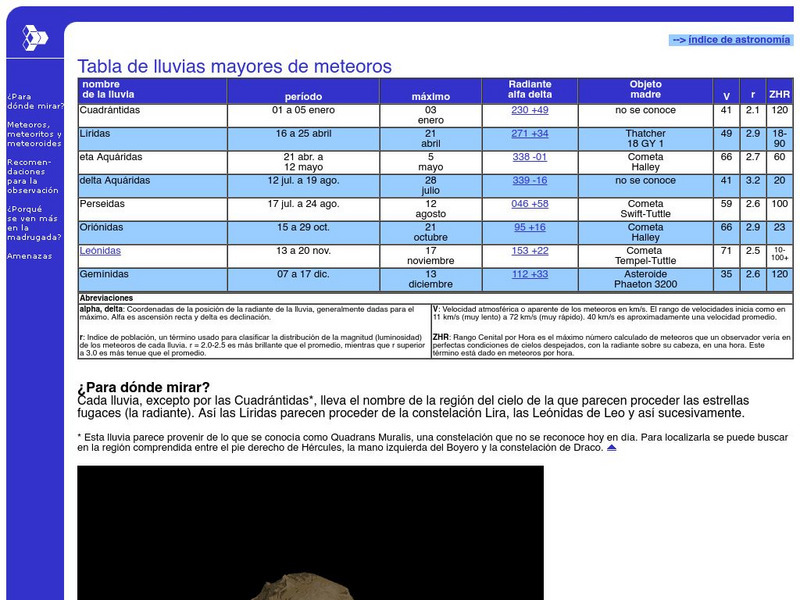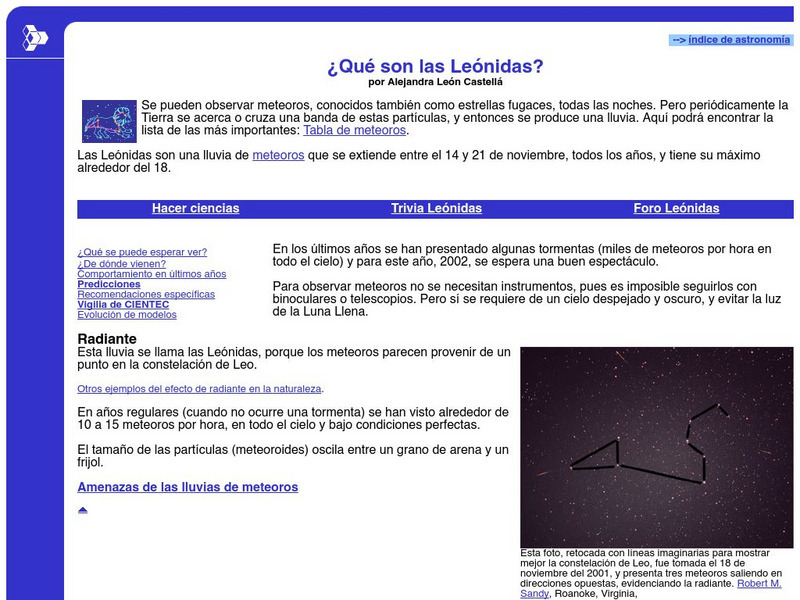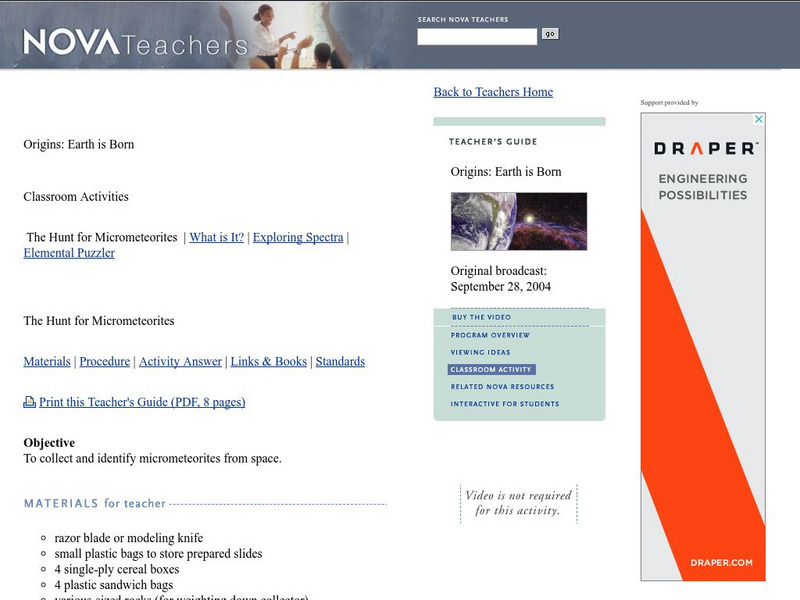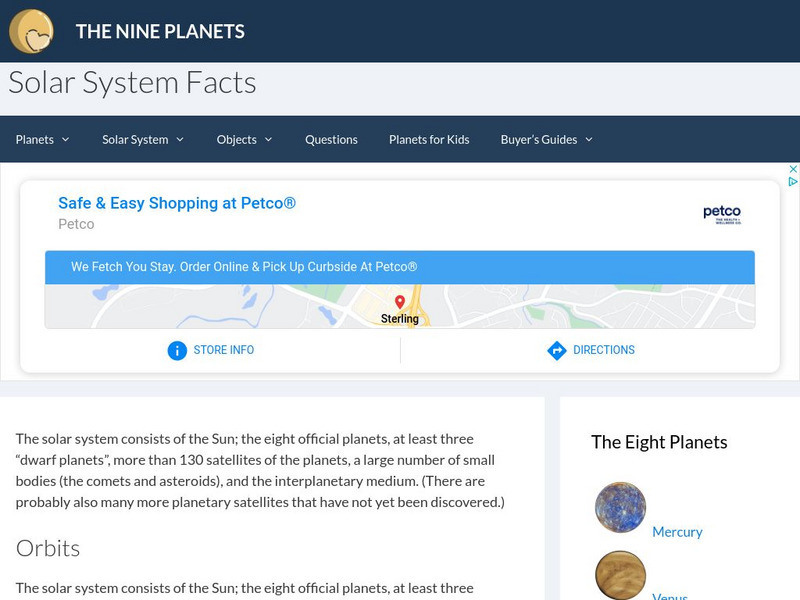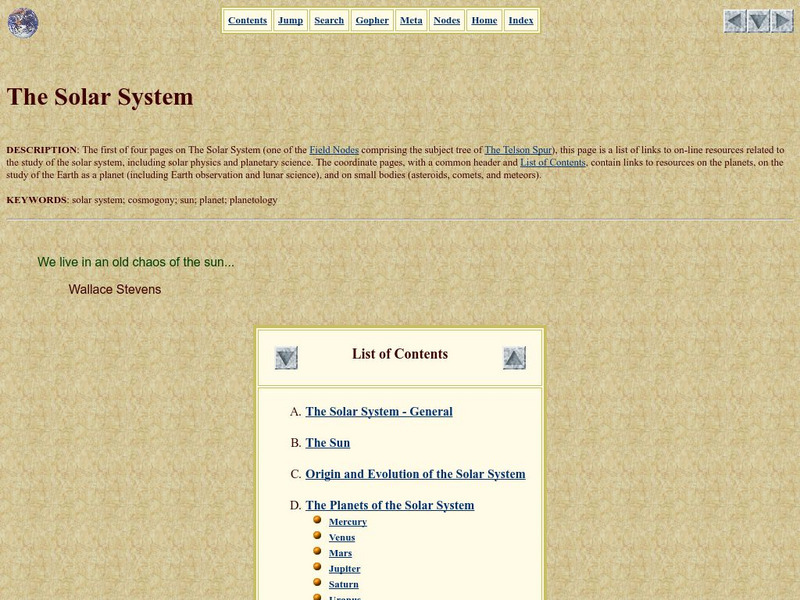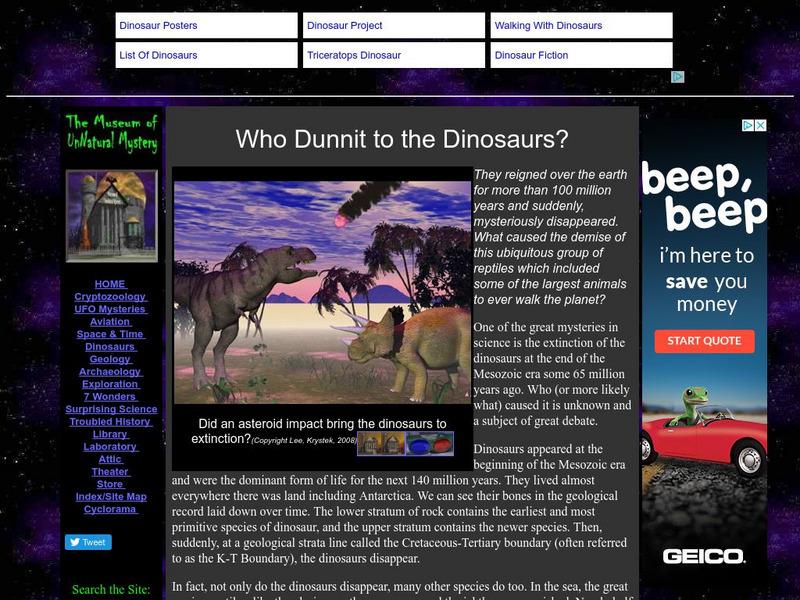Hi, what do you want to do?
Lawrence Berkeley National Laboratory
Berkeley Lab: The Fruitful & Inventive Mind of Scientist Luis Alvarez
This article, reprinted from the fall 1979 LBL News Magazine, was written about Dr. Luis Alvarez and his part in the study of geological sediments and the great extinctions.
Science Education Resource Center at Carleton College
Serc: Mn Step: What Does Meteor Size Have to Do With Crater Size?
For this activity, students investigate the size of crater that a meteor will make when it hits the Earth, and the various factors that affect the size. 'Meteors' take the form of different types and sizes of balls and objects.
Other
Catastrophism and Mass Extinctions
An overview of Walter and Luis Alverez's theory that a large meteorite crashed into earth causing huge tidal waves, showers of ash, and an enormous dust cloud.
University of Hawai'i
Asteroid Heating: A Shocking View
This April 2004 article provides insight and one view into the world of asteroid heating, the age of meteorites and new theories in the changes in shocked and unshocked chondrites. Some great photomicrographs.
Nine Planets
The Nine Planets: Small Bodies
This site explores the smaller bodies in the solar system, namely the various asteroids and comets. Links are also provided for additional information on related subjects.
Other
The Apollo Society: The Solar System
Contains a small set of images of solar system objects and a series of links to information about all solar system objects. Solar System Tours link to excellent image collections.
NASA
Nasa Star Child: Star Child
StarChild from NASA defines and describes the Solar System in a simple and easy-to-understand manner. The website is broken down into two versions for the student, grade school and junior high.
Fundación Cientec
Cientec: Tabla De Lluvias Mayores De Meteoros
This is an annual calendar of meteors showers. It has an animation that shows the difference between meteors, meteorites and meteoroids.
Fundación Cientec
Cientec: Que Son Las Leonidas?
What are Leonids? Where do they come from? Read and learn about those meteor showers on this site.
Curated OER
Ny Times: Locating Meteorites Lesson Plan
In this lesson, students explore how locations around a meteorite provide information about the meteorite?s orbit. They then learn about triangulation techniques, create imaginary cities in which meteorites are ensconced, and provide...
PBS
Pbs Teachers: Origins: Earth Is Born
Collect micrometeorites from space -- remnants of the time when the solar system formed about 4.6 billion years ago. Create a sky dust collector, sort particularate matter according to attributes and identify micrometeorites by their...
Nine Planets
The Nine Planets: An Overview of the Solar System
A detailed overview of the history, mythology, and current scientific knowledge of each of the planets and moons in the solar system.
Other
Dinosaur Extinction: One More Hypothesis
"The survivals and extinctions at the close of the Cretaceous are such as might be expected to result from intensely hot winds such as would be generated by extra large meteoritic impacts." This article suggests that this theory should...
Other
The Telson Spur: The Solar System
This is a list of links to online resources related to the study of the planets. It has a literary theme associated with the Lewis Carrol poem "The Hunting of the Snark" with many quotes from literature and science. Navigation tools...
Other
Who Dunnit to the Dinosaurs?
"One of the great mysteries in science is the extinction of the dinosaurs at the end of the Mesozoic Era some 65 million years ago. Who (or more likely what) caused it is unknown and a subject of great debate." Many theories are touched...












